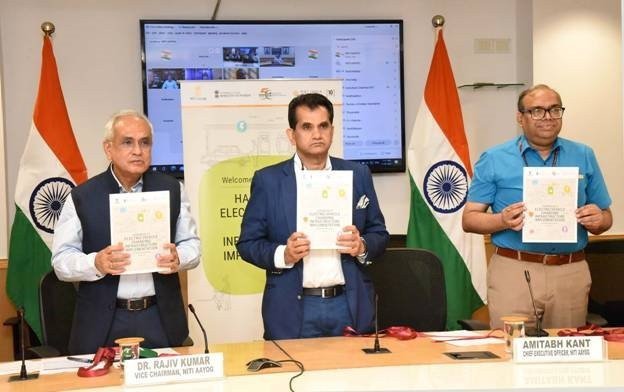NITI Aayog releases handbook for setting up EV charging network
NITI Aayog has announced that it has released a handbook to assist state governments and local bodies to frame policies and standards towards setting up charging networks for electric vehicles. The govt. body aims to develop the necessary infrastructure to enable a rapid transition to electric mobility in the country, the
Mutually developed by the NITI Aayog, the Power Ministry, the Department of Science and Technology, the Bureau of Energy Efficiency, and the World Resources Institute, India, the handbook delivers a systematic and all-inclusive approach for adoption by implementing authorities and other stakeholders involved in planning, authorization, and execution of electric vehicles charging infrastructure.
It offers an overview of the technological and regulatory frameworks and governance structures needed to enable electric vehicle charging and concentrates on the present needs of charging infrastructure development while contemplating the evolving nature of the sector.
The shift to electric mobility is a global strategy in the fight against climate change, on which India has expressed ambitious aspirations.
"The electric vehicles ecosystem in India is evolving rapidly and several players are entering the charging infrastructure market. This handbook provides holistic governance for public and private stakeholders to work together in establishing robust and accessible EV charging networks," NITI Aayog CEO Amitabh Kant said.
"The Ministry of Power and its central nodal agency for the establishment of charging infrastructure for EVs in India i.e. the Bureau of Energy Efficiency (BEE), are working closely with discoms and state agencies in overcoming barriers to charging infrastructure implementation, for which this handbook will be greatly helpful. With the rapidly growing share of renewables in the energy mix in the country, the benefits from the transition towards e-mobility are only expected to become more significant in the coming years," Power Secretary Alok Kumar said.
The handbook is principally meant for implementing authorities like municipal corporations and discoms but also underlines regulatory measures that can further facilitate the process of installing charging infrastructure.





















